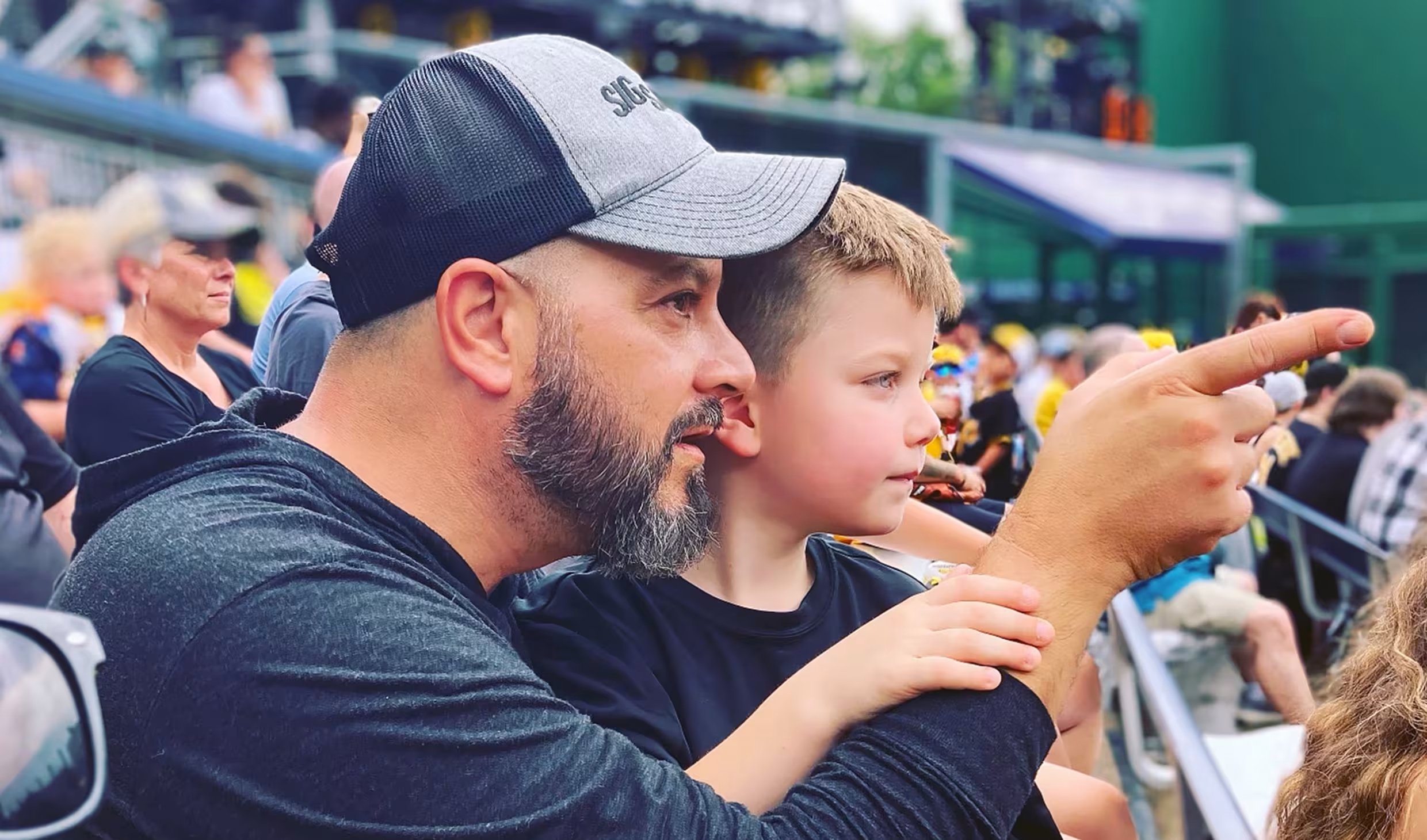
At first, Michelle Rogers thought the Craigslist ad she’d stumbled upon was a scam.
It sounded like something out of a science fiction film: Researchers were offering thousands of dollars to volunteers who were willing to give themselves the flu.
However strange it sounded, the experiment was the real thing. Vaccine researchers at the University of Maryland School of Medicine were testing just how much exposure to a current strain of influenza would cause infection as a way to prepare for future testing of antiviral drugs and vaccines.
“When you or I get flu, we don’t know exactly when we were exposed, right? We don’t know exactly how much flu got into our nose and there are just lots of variables that we can’t control,” said Dr. Kathleen M. Neuzil, director of the school’s Center for Vaccine Development and Global Health. “So in this way, we can say we know we put X amount of flu virus in somebody’s nose at X time, and this is what happens.”
We're making it easier for you to find stories that matter with our new newsletter — The 4Front. Sign up here and get news that is important for you to your inbox.
Studies like this are common fare for the center, which frequently provides critical vaccine research with the help of groups of paid volunteers. And following a hiatus due to the coronavirus pandemic, the studies are back — complete with eye-catching marketing campaigns.
For an upcoming study on the flu, which requires a 12-day hospital stay, ads include a cartoon hotel sign with the words “Hotel Influenza,” and the word “vacancy” illuminated in bright red. To advertise a study requiring a dengue fever infection, an animated mosquito dances beneath a disco ball in a white “Saturday Night Fever”-style suit. For a study testing a dysentery vaccine, it was a graphic inspired by the computer game Oregon Trail: a covered wagon pulled by an ox. And below it: “You have died of dysentery.”
For Rogers, a 24-year-old who drove to the School of Medicine from Chantilly, Virginia, the flu study was a way to make some extra cash between jobs ($3,410, to be exact). The downside? Nearly two weeks away from family and friends, plus her beloved yorkie and golden retriever mix — and a nasty case of the flu. But even after the headaches and congestion, the nasal washes and blood draws, Rogers felt she’d made the right decision.
Health
“I thought about COVID and how it was super important to have people be a part of the study,” Rogers said. “Otherwise, we may not have gotten a vaccine as quickly as we did.”
The center did administer early coronavirus vaccine doses for clinical trials, though notably without infecting anyone.
“People were talking about doing challenge studies for COVID early on, to help accelerate vaccines, and I was very much against that,” said Dr. Wilbur Chen, chief of the adult clinical studies section at the University of Maryland Center. “We didn’t have therapeutics at that time. We didn’t have vaccines at that time. We also had a lot of cases around the world and across the U.S. and even in the state of Maryland at that time. So I could not, in my mind, justify the use of a challenge study.”
The idea is to test vaccines with “challenge studies,” as they’re known, in places where the disease is relatively rare and to ensure that all participants won’t be vulnerable to severe disease. For flu studies, that means screening possible participants for respiratory issues. For Chen’s study on dysentery, that meant checking for abdominal problems — and conducting genetic testing for HLA-B27 to ensure participants weren’t predisposed to contracting reactive arthritis after bacterial infections.
The Oregon Trail advertisement for Chen’s study caught the eye of 26-year-old Jake Eberts on Instagram. But his eventual stay in the dysentery ward provided the center with something possibly more valuable than the paid ads: a viral Twitter thread.
His first tweet about the study, days before he drank a Shigella bacteria “smoothie” that left him sicker than he’d ever been, was liked about 4,000 times. Before he even left the hospital ward, a nurse told him 20 people had signed up for the next phase of the study and mentioned his thread, which carefully documented his experience on the ward as a self-described “fancy little lab rat s---posting (no pun intended) his way through the maze.”
“Within 48 hours of my first thread, it had already gotten back to the researchers and nurses themselves, who asked me about it,” Eberts said. “And they were very chill with it. Like, I was terrified that they would tell me to stop and like would get really angry.”
But all the tweets about dysentery might have been bad luck. Eberts suffered one of the worst cases in his 16-person cohort and was plagued by painful bouts of diarrhea and powerful fatigue. Perhaps his Twitter feed fared better for it.
“It would have been kind of hilarious if I had been building up all the tension and ended up with an anti-climactic ‘I didn’t get it. Sorry everyone. Bye.’” he said.
When I was in the midst of the disease, I was like, 'Wow, this really sucks.' I would like to use my 15 minutes of viral fame to fundraise for this.
Jake Eberts, dysentery study participant
The stomach pangs started in the middle of the night, some 40 hours after Eberts drank his shot glass’s worth of bacteria, which he said tasted “slightly saline and a bit oily but not bad.” (Some of the headlines stemming from his tweets called it a ”poop smoothie.” It wasn’t.)
By that afternoon, rising for a vitals check and trips to the restroom, which required stool samples, were Herculean tasks, he said. After one walk, a mere 15 feet down the hall, Eberts found himself lying on the bathroom floor, utterly exhausted.
“I was lying down in this bathroom that I share with other people and just like taking a cat nap and just trying to recuperate my energy for like five minutes — at which point the nurses were like, ‘OK, something’s wrong here.’”
Eberts’ return to his hospital bed in the communal facility brought IV fluids, several extra blankets and a space heater, along with a visit from the attending physician. By 6 p.m. that evening, doctors determined that Eberts had reached a threshold for severe illness, which meant he’d receive antibiotics to help his body fight the disease.
By the end of the ordeal — with the help of a league of new Twitter followers — Eberts had raised nearly $25,000 for The Water Project, a nonprofit that constructs reliable water systems in Sub-Saharan Africa. Some of Eberts’ reward money from the study went to the nonprofit as well.
“When I was in the midst of the disease, I was like, ‘Wow, this really sucks,’” Eberts said. “I would like to use my 15 minutes of viral fame to fundraise for this.”
For 32-year-old Rebecca Jimenez, an engineering consultant living in Rockville, getting sick for a study wasn’t quite as harrowing.
Jimenez had planned to do the March flu study with her partner, but after they arrived, researchers determined he had a cold, which rendered him ineligible to participate. So she endured the hospital stay sans roommate, with the near-exclusive company of a collection of doctors and nurses, a yoga mat and Hulu shows.
She was heartened, though, by the study’s importance. As a young Hispanic woman, Jimenez was hopeful that her participation would increase the diversity of study participants.
Jimenez was also able to work remotely from Hotel Influenza, taking meetings in between the occasional blood draw and nasal lavage. Just as she was preparing to close her laptop that Friday, though, it became apparent: She was sick. Over the weekend, she felt achy, feverish and just plain exhausted. But she didn’t regret her decision.
“It’s probably the safest way I’ve ever had the flu,” she said.
But she had to test negative for the flu before she could leave the ward. By the time she was finally cleared to leave the facility that Thursday, she was eager for some fresh air. That, and a tasty meal.
“I’m pretty sure I went to Five Guys,” she said.



